In another installment exploring the films of UK’s famous Hammer Studios, we will take a look at two more of directors who were fairly frequent collaborators with Hammer Productions, John Gilling and Roy Ward Baker.
John Gilling
John Gilling began his career in the late ‘40s directing, like many of his contemporaries, a series of B-pictures mostly in the horror and crime genres until garnering the attention of Hammer with his film The Flesh & The Fiends which, while not produced by Hammer, did have many of the hallmarks of the studio with its lurid subject matter (based on the case of Burke & Hare) and the presence of Peter Cushing in the lead. Gilling would go on to direct several memorable films with Hammer including Plague of the Zombies and The Reptile. He would all but retire from the industry in 1975 but left a solid string of competent genre films that showed an economy of storytelling and an ability to stretch a budget. He may not have been among the most celebrated of Hammer’s directors, but his films still hold up after all these years. He must have been doing something right, yea?
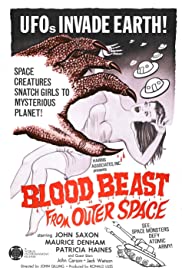
Blood Beast from Outer Space (1965)
a.k.a. The Night Caller
Scientists discover what appears to be a meteorite that has crashed in rural Britain but in the shape of a smooth sphere. After further analysis, they find it is actually an emissary from a moon of Jupiter. Before long, an alien is kidnapping women to use for nefarious breeding purposes and the scientists are at a loss on how to stop it. This one is interesting as being a film that feels very much like a Hammer film (much of it feels like a lost Quatermass film in fact) but was actually produced by Armitage, another UK studio. The directing is actually quite good in places with effective use of light and shadow to convey the mystery of the creature as well as odd camera angles to disorient the viewer at times. The film is a little too exposition-heavy in places, but for British sci-fi veterans, this isn’t going to be a dealbreaker. John Saxon acquits himself well in his first of many sci-fi/horror roles, and I think in general this one is worth checking out.
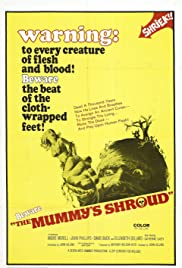
The Mummy’s Shroud (1967)
If you’ve seen the first two Mummy films from Hammer, you can probably guess how this one plays out. Some archeologists discover a forgotten pharaoh’s tomb after ignoring a local’s plea to turn back or be cursed. Of course they cart the mummy back to the museum for further study, and naturally, someone reads the cursed oath that brings the mummy to life, leading to a killing spree of everyone involved in the expedition. The final act of this film is fine if you like some mummy murder action, but the film is agonizingly slow-paced in the first half. The directing also feels somewhat lifeless, strange since Gilling actually wrote this one himself. I would think he would feel a little more invested in the material.
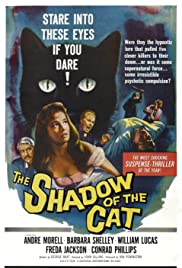
The Shadow of the Cat (1961)
Beginning with a quote from Poe’s “The Raven”, Shadow of the Cat wears its Poe influence on its sleeve. While it isn’t a direct adaptation of Poe’s “The Black Cat”, the similarities are obvious with both this film and the original story using a cat as a plot device to convey the lead’s nagging guilt at a heinous act committed. In this film, a rich old woman is murdered by her butler after he forces her to make a new will leaving him her inheritance. The butler notices that a cat witnessed the murder and begins to obsess over his sole witness to his crime. As other deaths start to occur involving the cat, the butler’s paranoia begins to escalate, his fear of the cat growing with each act. The history of this film is a bit murky. Some sites including Wikipedia label it as a Hammer production but then others dispute this, declaring it an independent Bray Studios release. Either way, it’s a pretty entertaining film albeit a little on the silly side. Gilling’s direction is capable and well-suited to illustrate the protagonist’s growing mania.
Roy Ward Baker
In addition to directing several classic Hammer and Amicus horror pictures, Roy Ward Baker is perhaps most well-known internationally as the director of the award-winning dramatization of the sinking of the Titanic, A Night to Remember. He’s a consummately British director with a restrained style that allows him to move effortlessly from small b-noirs to big studio pictures to action-filled television to horror and beyond. Some have criticized his lack of a personal style but that seems to be by choice. After directing a series of crime pictures in the UK, Baker was lured over to Hollywood for a few years where he directed a string of pictures in the 20th Century Fox studio system, mostly crime pictures like the Marilyn Monroe sizzler Don’t Bother to Knock and the bleak Robert Ryan 3-D thriller Inferno. Eventually he moved back to the UK where he branched out into television and then ultimately into the horror genre where he directed classic Hammer films like Quatermass and the Pit, The Vampire Lovers and Dr. Jekyll & Sister Hyde as well as well-regarded anthology horror films for Amicus like Vault of Horror and Asylum. With his reputation cemented by the Criterion release of A Night to Remember in the critical eye and his genre work celebrated by the international horror community, Roy Ward Baker leaves a strong body of work worthy of praise, auterist or not.
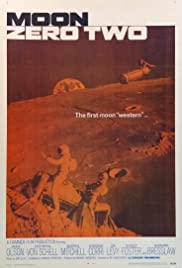
Moon Zero Two (1969)
What an odd movie to exist… The tagline for this one advertises it as the first moon “western” which is I guess about as good a thing to call it as anything else. The movie takes place on the moon where apparently the inhabitants behave not unlike the moon is the wild west. A salvage crew (guns for hire) plans to hijack a sapphire asteroid (train robbery) and stash it at a mining site but there’s a meddling miner they have to get rid of first. It’s garish, silly and completely unlike anything else Baker and Hammer ever did together (or really apart either). Despite taking place in the future (apparently the only Hammer film to do so!), the whole affair is laughably dated from the music to costumes. It’s not a great movie but if you loved the Sean Connery movie Outland and want more sci-fi westerns, you might as well check this one out.
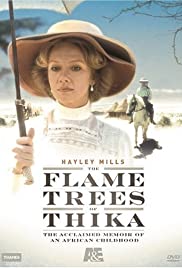
The Flame Trees of Thika (1981)
This seven-part mini-series follows the trials and tribulations of a British family who move to Kenya to set up a coffee plantation in the pre-World War I era. While this type of miniseries offering a combination of slice-of-life elements with mild bouts of adventure isn’t something I normally gravitate to, Baker does a solid job of producing a polished, period accurate drama that fans of Merchant-Ivory productions should find delightful and well-made.
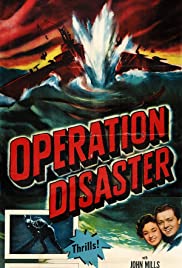
Operation Disaster (1951)
a.k.a. Morning Departure
Morning Departure is the tension-filled tale of a submarine that runs afoul of a landmine and sinks to the bottom of the ocean, leaving 12 crew members alive but trapped inside. What follows is a series of rescue missions to help the men escape while their isolation and tight quarters begin to take its toll on them. While this film has a few places that don’t quite work as effectively as it could, it still does a good job of building suspense as well as fleshing out the characters of each of the men trapped, particularly the last four remaining who are forced to stay behind until the submarine can be retrieved from the bottom. The acting in general is very good with Richard Attenborough as a standout as a shipmen who at first panics but evolves his character over the course of the film. Certainly worth a watch as a solid submarine disaster thriller.

